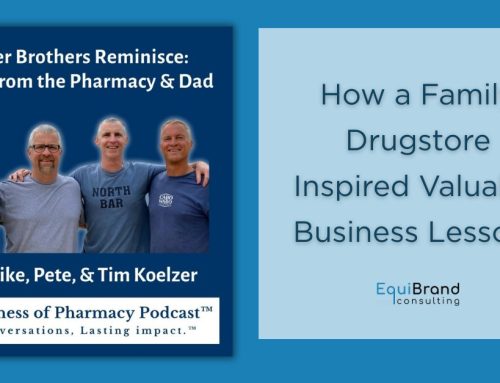When it comes to strategy development, there is a great statement that applies: “A problem well stated is half solved.”
Meaning, when a problem is clearly defined, it’s that much easier to answer.
What is the first step you take when you have a problem to solve? Not everyone will have the same answer.
Consider Albert Einstein, who purportedly once said that if he had an hour to solve a problem, he’d spend fifty-five minutes thinking about the problem and five minutes thinking about solutions.
Business Strategy, Defined by a Management Guru…
The opposite of this is a concept called “boiling the ocean.” As the phrase suggests, if the problem is unclear, there’s a risk of trying to do the impossible. Additionally, some issues are so complex, it’s difficult to know where to even begin. That’s when “analysis paralysis” sets in.
By definition, growth involves new things: new products, new markets, and new channels. Since there’s often no existing fact base to consider, it can be unclear how to get started and what comes next. What questions need to be answered to improve success rates? Management guru Michael Porter sees business strategy as a set of long-term choices that articulate the competitive advantage companies seek to create in order to win.
A.G. Lafley, former CEO of Procter & Gamble, and Roger Martin, dean of the Rotman School of Management, echo the strategy-as-choice definition in their book Playing to Win: How Strategy Really Works.
Consistent with this approach, questions can be a powerful way to improve upstream marketing. The better the question, the more valuable the answer.
A Missing Link for Generating Revenue Growth
Upstream marketing refers to the strategic process of identifying and fulfilling customer needs. It takes place at a much earlier stage than downstream marketing by developing a clear market segmentation map. Then it identifies and precisely defines which customer segments to focus on.
It analyzes:
- How the end user uses the product or service
- What competitive advantage is required to win the customer
- …and at what price point
This is done very early in the product or service development cycle and is one of the missing links for generating revenue growth at many companies.
Downstream marketing, on the other hand, is what most people visualize as marketing. It involves the familiar advertising, promotion, brand building, and communicating with customers through digital marketing, public relations, social media, and in-store.
Companies tend to spend an inordinate amount of money on downstream marketing activities, while altogether ignoring critical upstream marketing activities.
The first step to developing an upstream marketing strategy is the framing questions covered below:
Ask 4 Key Framing Questions to Achieve Better Marketing Results
Listed here are four interrelated framing questions used in upstream marketing. Each question informs the next and draws on specific methods to obtain answers. Collectively, this Q&A format is vital to structuring the framework.
Here are the details:
- Where to play? Specifically, to whom and for what, is the first strategic business decision to make regarding where to compete and where not to compete. This involves mapping customer segments (to whom?) and their needs (for what?) to identify strategic opportunity areas. Which customers, markets, channels, and broad product categories should be pursued?
- How to win? Informs value proposition and brand development. What’s the optimal business model, value proposition, product, or service concept to address the specified opportunity area? If to whom and for what determines the fishing pond, then how to win defines the optimal bait.
- How might we? This jumpstarts innovation by pushing for creative solutions to a complex problem. Wording the question this way is preferred over “how can we” or “how should we,” because it opens up opportunities. This framing question is central to the design sprint process used by Google and other high-profile companies.
- What would have to be true? This final question links upstream and downstream marketing. While the first three questions promote expansive thinking, this one narrows choices in moving toward execution.
A Simple Framework for Smart Marketing Strategy
To improve success rates, consider ahead of time what’s required to win, including business metrics and financial thresholds. Go upstream and use mini tests to assess what must be true about product acceptance, channel penetration, sales, and marketing requirements to succeed. Gain experience before making the next sizable bet.
After considering all these things, keep in mind Porter’s other advice for strategy: Define it as “choosing what not to do.”
Think of these four questions as the framework to upstream marketing. The answers will lead you further into developing best practices to evolve your marketing strategies.
Discover more about the upstream marketing process and how to implement it in your business effectively: we are excited to offer a free download of the first chapter of our book, Upstream Marketing.
In it, we discuss in detail these 4 key framing questions and the principles of upstream marketing, insight, identity, and innovation. Download your free chapter here.




















Follow EquiBrand